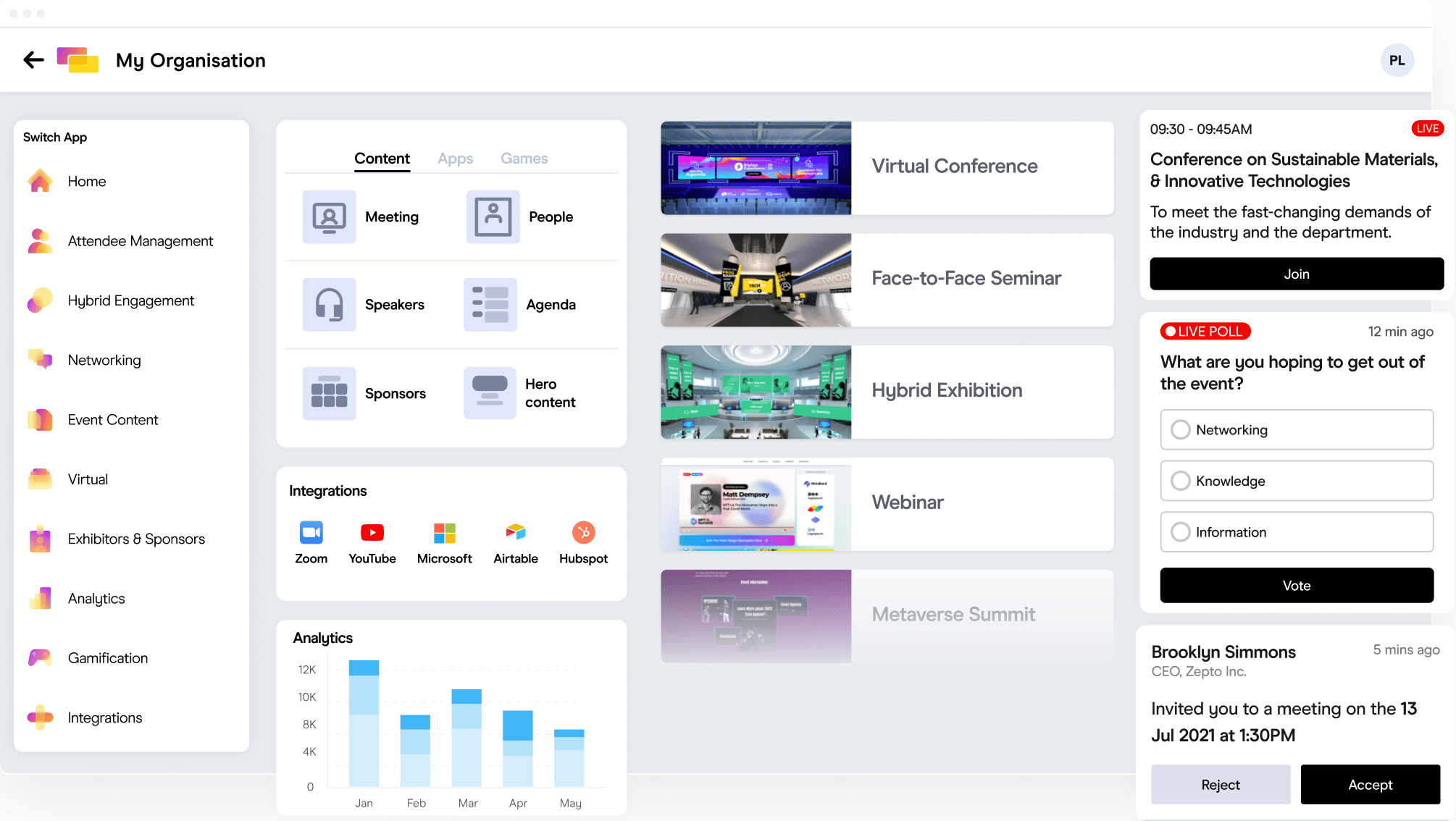Let’s start with a simple truth: your registration experience is a reflection of your event’s intelligence.
If it’s chaotic, unclear, or riddled with unnecessary friction, it doesn’t matter how strong your program is. Attendees will hesitate. Some won’t convert. Others will register with the wrong ticket, skip key sessions, or miss benefits they were entitled to. And all of this traces back to how you’ve designed your ticketing and registration flow.
Today’s events are no longer one-size-fits-all. And that’s a good thing — more personalization means more relevance, higher value perception, and better monetization. But with that flexibility comes complexity. And that’s where most organizers trip up.
The Tension: Personalization vs. Clarity
Multiple ticket types aren’t optional anymore. They’re expected.
Whether you’re hosting a global summit, a trade conference, or a members-only annual meeting, tiered pricing, access levels, group discounts, early bird promos, and VIP experiences are core to your strategy. They help maximize yield, segment your audience, and drive engagement.
But here’s where it breaks down: most platforms and processes still treat all registrants the same.
A first-time attendee browsing your homepage gets dumped into the same labyrinth as your long-time sponsors. Your group registration is clunky. Your promo code logic is brittle. And your ticket selection interface requires more guesswork than it should.
The result? Friction. Confusion. And most critically — drop-off.
According to Eventbrite’s 2023 industry insights, nearly 1 in 2 attendees will abandon registration if the process is “too complex or unclear.” We see this echoed across client data, user behavior analytics, and feedback loops. Your strategy might be smart. But if the execution is unintuitive, it undercuts your entire conversion funnel.
The Real Goal: Invisible Complexity
If you’re serious about growth, the goal isn’t fewer ticket types — it’s smarter, more contextual ticketing.
The smartest event teams we know treat the registration flow like a product. They obsess over UX. They test it like e-commerce teams test checkout flows. They know that the backend logic can be as complex as it needs to be — but that complexity must not touch the user.
Good registration design hides the architecture. Great design makes it feel effortless.
What Modern Event Registration Should Actually Look Like
Let’s define the new standard.
If you’re still making attendees dig through dense ticket charts or compare five tiers in a PDF, you’re solving the wrong problem. Here’s what a modern, scalable online event registration system flow should look like:
- Dynamic logic: Only show attendees the ticket types, sessions, or fields relevant to them — based on what you already know or what they select.
- Integrated promo logic: Promo codes should apply seamlessly and visibly, without breaking trust or requiring a help desk ticket.
- Progressive disclosure: Don’t overwhelm users upfront. Guide them through the process in digestible steps.
- Personalized flows: A speaker shouldn’t register the same way as a sponsor. Neither should a VIP or a student.
- Mobile-first design: Assume they’re registering from their phone. Because many of them are.
- Automated follow-ups: Confirmation emails, payment receipts, session access — all tailored based on their ticket type.
This isn’t aspirational anymore. This is achievable — and essential — if you’re operating at scale.
Why Gevme Solves This Intelligently
This is where Gevme earns its place.
Gevme doesn’t treat registration as an afterthought. It treats it as the system of record — the foundation of everything else you do. And it’s built to handle the level of complexity most modern event stacks require, without introducing friction into the attendee experience.
Here’s what that looks like in practice:
- Flexible ticketing models: Tiered pricing, group bundles, exclusive access — all configurable without engineering support.
- Promo code management and partner tracking: Not only can you deploy codes across campaigns, but you can also track attribution and performance directly.
- Intelligent form logic: Registration flows adapt dynamically based on who’s registering and what they’re selecting.
- Session selection in context: Attendees register and build their agenda in one integrated flow — not as a secondary process.
- Localization and personalization: Registration forms that adapt to language, audience type, and previous engagement history.
- Gevme Wallet: A unified space for attendees to manage tickets, session access, and payments — seamlessly.
From a data architecture standpoint, this matters. Because the cleaner your registration experience, the more accurate and structured your data. And the more segmented your data, the more intelligent your marketing, access control, and personalization become.
The Bigger Picture: Registration Is a Strategic Lever
Too often, online event registration system is treated as a task. A form to build. A list to collect. But that’s a tactical mindset — and it costs you.
Online event registration system is where attendees form their first opinion of your event. It’s where marketing ends and experience begins. It’s the single point where pricing strategy, audience targeting, access control, and operational data converge.
If you get this right, the rest of the event becomes significantly easier to manage. You eliminate rework. You reduce manual corrections. You free up your team to focus on experience design and relationship-building — not troubleshooting access issues or fixing broken discount logic.
If you get it wrong, the ripple effects are expensive.




